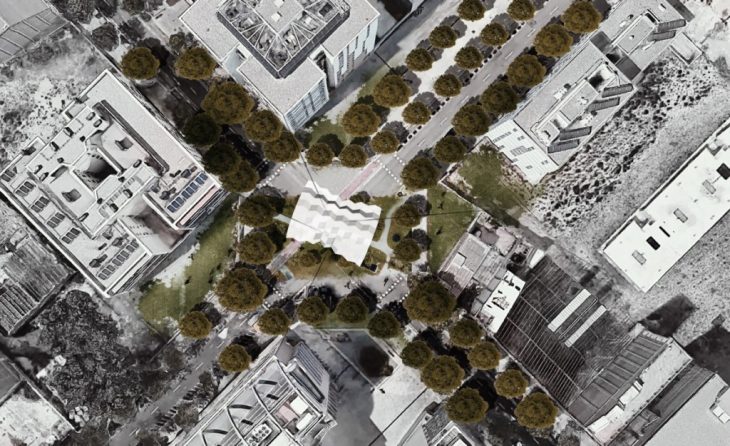CloudFold – responsive architecture
Site
This project proposal aims as optimising the living conditions in the first developed superblock of Barcelona. The Superilla is an urban proposal aiming at uniting 9 blocks of the urban fabric. The goal is to increasing the active public area and to give back to the community.
A new public square can be developed in the intersections due to the new regulations of the Superilla. Even though, an interesting observation made in the area, was that very few people interact with the middle of the intersection. Furthermore the aim of the studio was to increase that interaction and to provide public functions that will act as attractors.
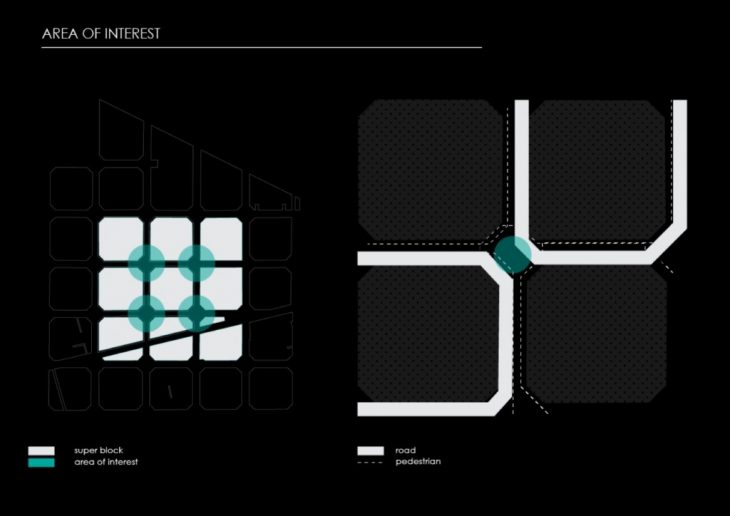
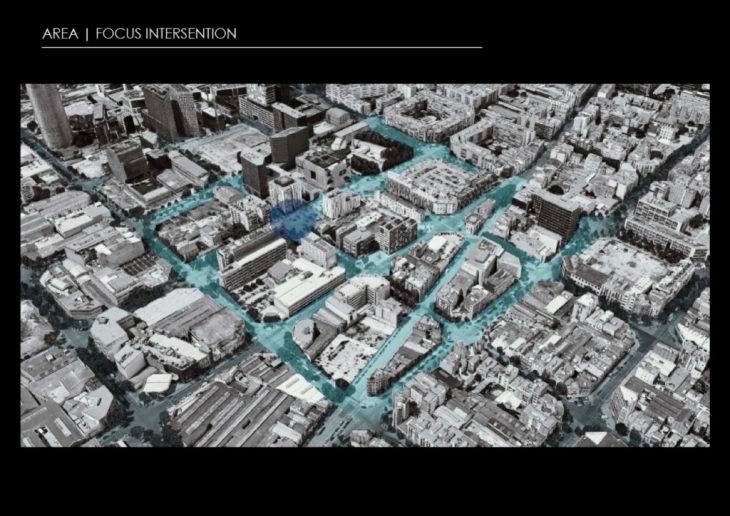
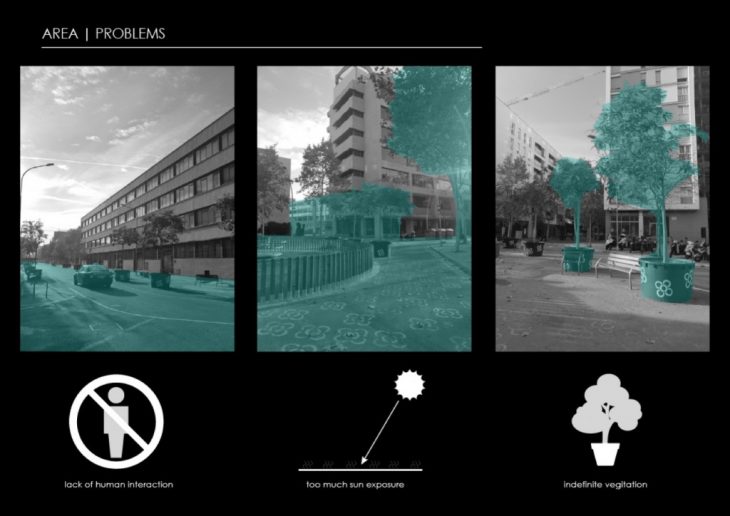
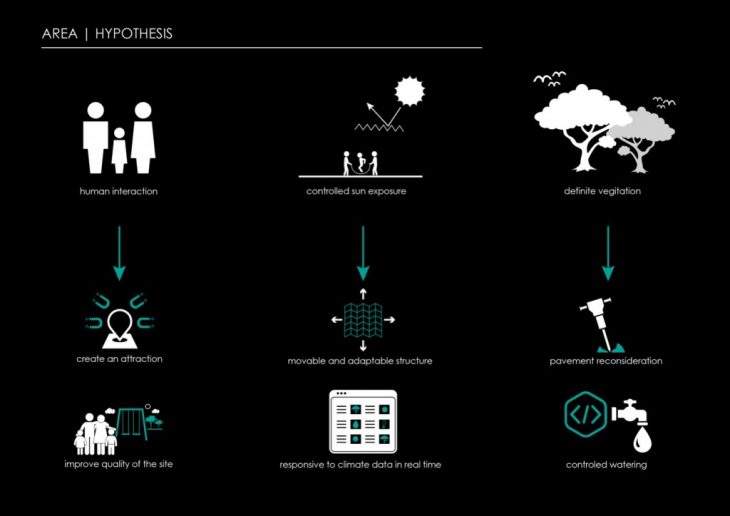
Prototypes
At the beginning of the exploration a suspended balloon structure with wind turbine was developed as a shading device. This exploration proved that the use of gas substances in high-altitude can be challenging at a prototype level. Working with inflatable structures the biggest issue was the gas leakage. It could have been minimised with the use of expansive foil material with double-coating. Even though another solution seemed more reasonable.
Due to the challenges of floating structures the second prototype looked at an option of attaching the device to the near-by buildings and regulating the movement with the help of motors. This concept works by mimicking a parallel robot. Most of all it gave a much better control of the movement and a faster response of the structure.
Further along a study of foldable structure was made in order to optimise the structure itself. The general idea was to create a device that does not only move in x,y and z directions but also contracts and expands according to the climate conditions. Among all the explored folding patterns the Miura Fold showed best performance. It is a Japanese origami pattern that uses simple geometry that has a shrinking capacity of 90%.
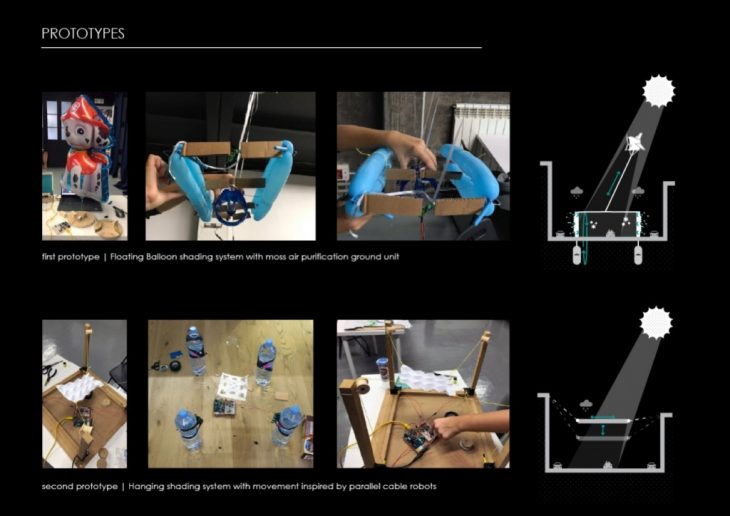
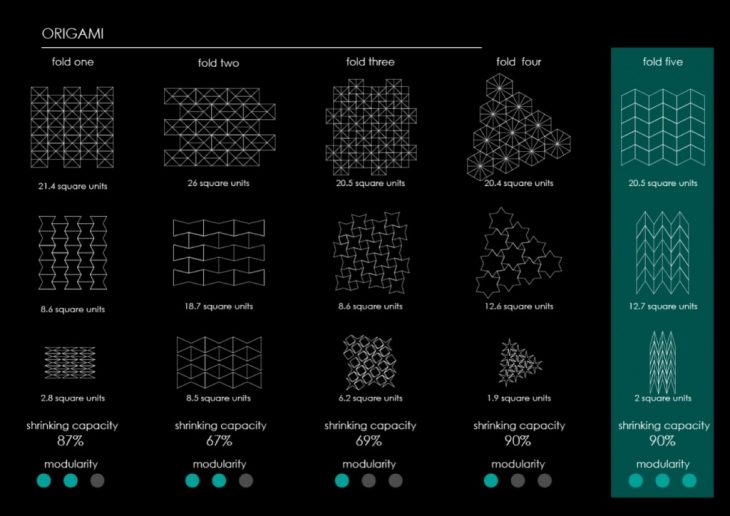
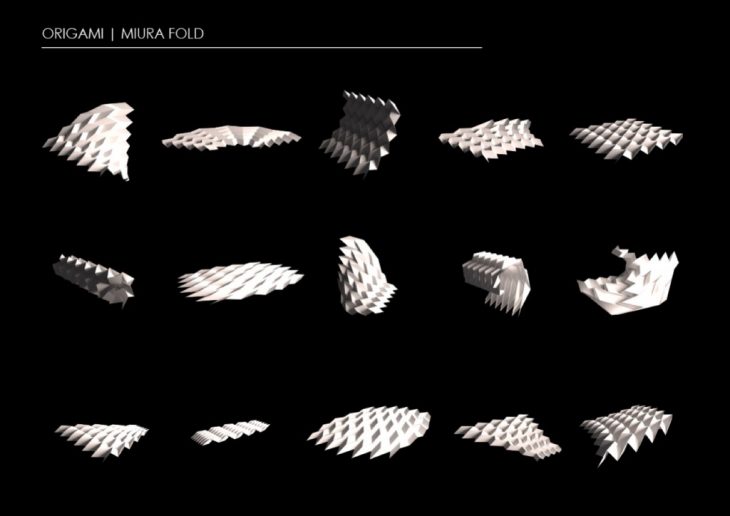
Proposal
CloudFold is a device that takes advantage of the natural phenomenas. First of all photovoltaic panels integrated with the structure generate enough energy to power up the entire device and therefore to make it independent from external powers sources. The energy will also be used for illuminating at night. On the other hand rain water is collected in panels to water vegetation in the square and to cool during the summer. Furthermore the structure behaviour will be dictated by interpolating data collected from soil humidity sensors, temperature and humidity sensors and PV sensors located on the ground. The movement of the structure is accomplished with the help of peristaltic pumps that pump some of the collected rain water to soft robots apply pressure to some of the panels and make the structure contract and vice versa.
In conclusion the structure interpolates data collected from sensors. Movement, subtraction and expansion are triggered according to the climate data collected. Especially relevant is the use of stepper motors and peristaltic pumps in order to provide these phase-changes.

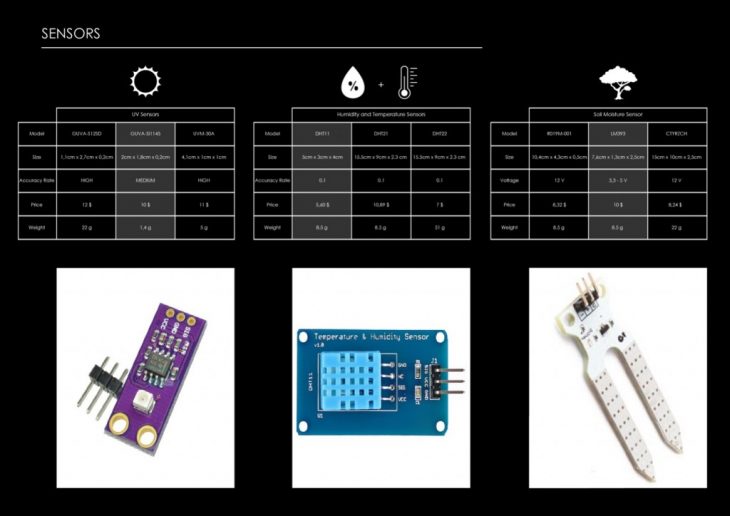
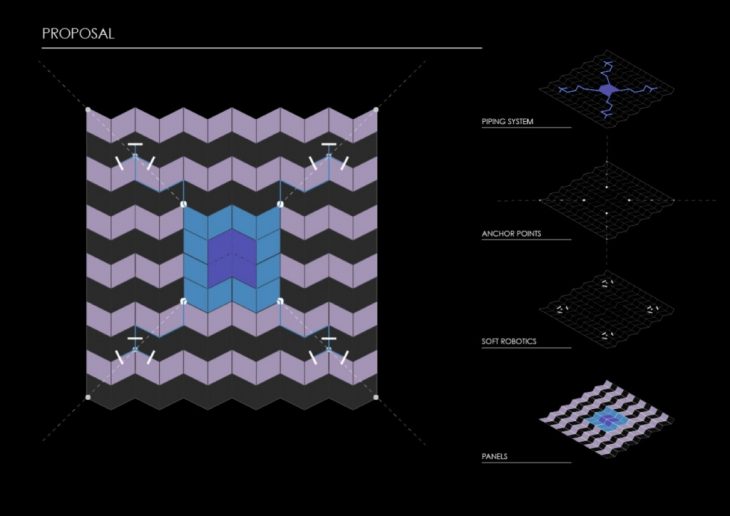
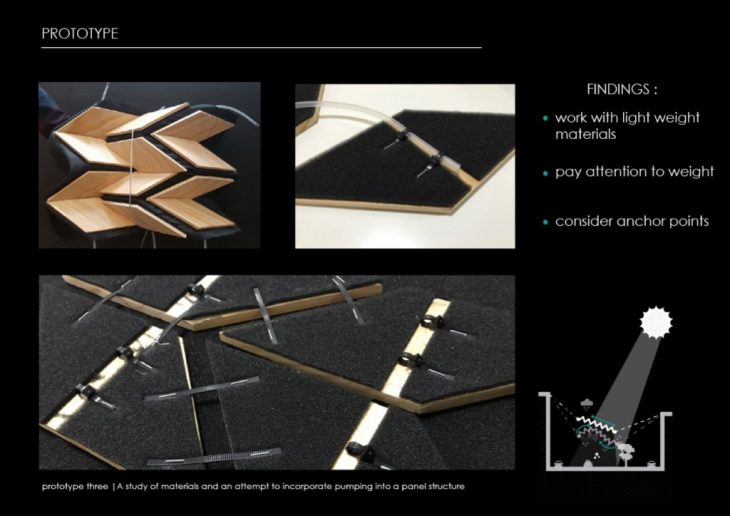
Soft Robotics
Some promising results were obtained after a study on soft robotics and different silicone compounds. Overall the “dragon skin” silicone exhibited high performance and lightness. In addition the soft robot needs less than 50ml of water to expand enough and contract one pair of panels with its adjacent. Furthermore the central input pipe does increase the pressure applied to the panels.
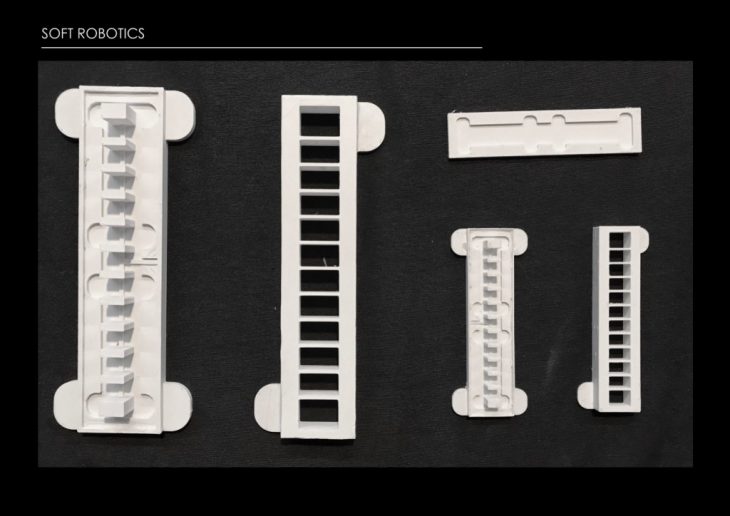
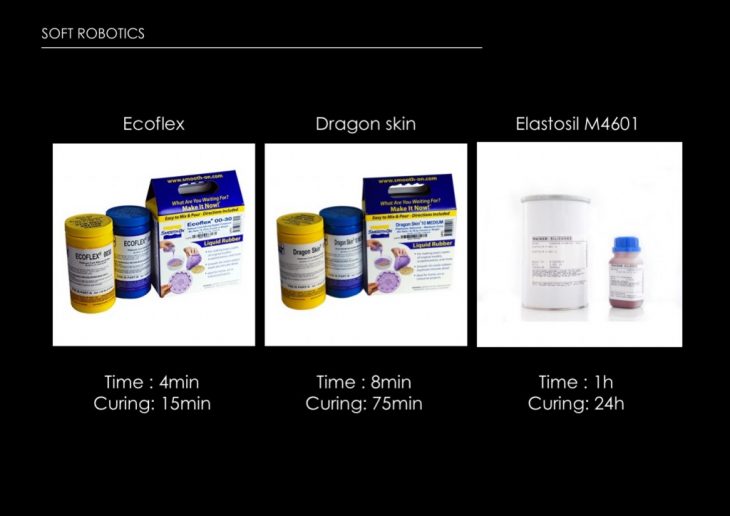
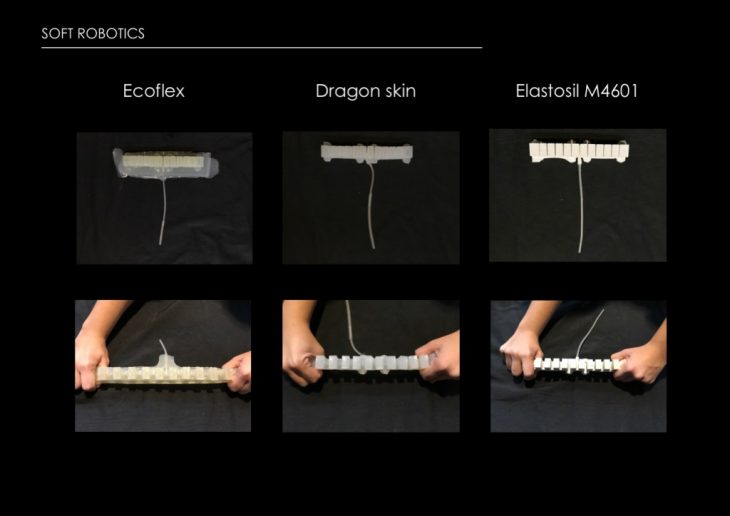
CloudFold – responsive architecture
Introductory Studio (My Metabolic Garden); CloudFold is a project of IaaC, Institute for Advanced Architecture of Catalonia; developed at Master in Advanced Architecture in 2017/2018 by Nikol Kirova, Anna Pilyugina and Milivoje Mom?ilovi?
Faculty : Javier Peña, Oriol Carrasco, Catalina Puello Acosta
